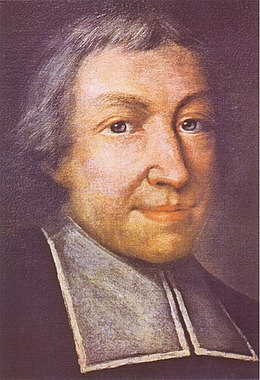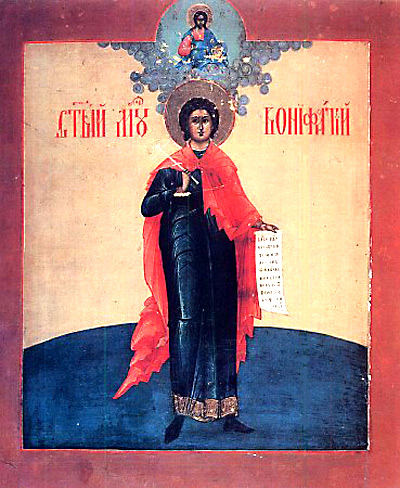Text from The Saint Andrew Daily Missal,
unless otherwise stated.
Saint John Baptist de la Salle.
Confessor.
Feast Day 15 May.
Double.
White Vestments.

John Baptist de la Salle.
This is the official portrait of Saint John Baptist de La Salle, the Founder of
The Brothers of The Christian Schools. It is by Pierre Leger and has been designated
as the official portrait of him for the Congregation.
Date: Unknown.
Source: The portrait is in the public domain and featured on the official website
of The Congregation, plus many other locations both in Print and on the Internet http://www.lasalle2.org/ClipArt/Iconog/icon5.jpg
Author: Pierre Leger.
(Wikimedia Commons)
Born at Reims on 30 April 1651, of an illustrious family, Saint John Baptist de la Salle made himself, from childhood, dear to all by the virtues of his Soul, the gentleness of his nature and the keenness of his mind. He went to Paris to study Theology at The Sorbonne. At seventeen, he was a Canon of the Cathedral.
When he reached the Priesthood, he offered The Holy Sacrifice with fervent Faith and intense love; these never left him when he was at the Altar. God had raised him "to give a Christian education to the Poor and to confirm youths in the way of truth" (Collect). With this object in view, he Founded a new Religious Congregation which he called "Brothers of The Christian Schools" and which soon spread throughout the World.
Out of humility and out of love for poverty, he gave up his Canonry and gave all he had to the Poor (Epistle). "Inflamed with zeal for the salvation of Souls, he spent himself during his whole life," says The Breviary, "for their greatest good." Assiduously treating himself with rigour, in fastings, flagellations and other austerities, he passed the night in Prayer (Introit).

Such was his manner of life, until, remarkable for every virtue, especially for his obedience, his zeal for the accomplishment of The Divine Will, his love and devotion towards The Apostolic See, and loaded with merits, he fell asleep in The Lord, at Rouen, on Good Friday, 7 April 1719, at the age of 68."
After striving to pass his life in the most humble duties, by serving Jesus in little children (Gospel), he was called to Heaven by The Divine Redeemer Whose Glory he shares, and Who still Blesses his work throughout the World.
"Let us burn with zeal like this Saint to procure The Glory of God by saving Souls, so that we may share his reward in Heaven" (Collect).
Another proper Mass is said in the Houses of The Brothers of Christian Schools.
Mass: Os justi.







